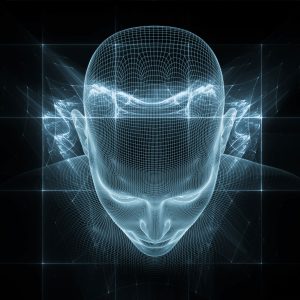Blog Series | The View From my -SHIPs
Welcome to my fleet of -SHIPs: my stories on leadership, friendship, personal relationships, business partnerships, personal ownership, the money-ship and a sneak peek into my world on the metaphysical mothership.
What happens when psychology and metaphysics play together in the same sandbox?
Trauma works with the mind and brain in funny ways. When working with clients with severe childhood, adult, or tragic trauma, I’m less concerned with having them access a specific event (the when) as if time existed in a linear fashion — which would be standard for a psychotherapeutic modality — and more concerned with getting them to access mind, body, and spirit (all three attributes of the self) in the present moment using a 4D approach. Sometimes that requires showing them that there is an essence of them that exists outside the concept of time.
I can pull forward a client’s future and past self and put them at a conference table to have a ‘Self-Committee” meeting on what to do with the situations at hand. If that doesn’t work, I review the lifespan laterally and pull in other versions of the self from other places in the multiverse using a philosophical metaphysical belief based on String Theory. Yup. I really do that. Somewhere out there is a version of them that’s already figured it out and we just need to go exploring to find that person. It’s really amusing to have a client describe their other versions as these versions arrive on the scene. It usually takes a bit of time to move past the confusion but it’s like an unexpected family reunion with fractals of the Big-Self. The client and their other versions act like it’s a family reunion! If we happen to pull in a future self, they, being independent of the current self, won’t divulge specific information of what’s happened or not yet happened unless absolutely necessary. What they do, instead, is act like a life coach to prompt the current self to reach the conclusion on their own. After all, each version exists as the same time as the others because time is not linear. After the newness wears off, we get down to business.
One of the metaphysical methods in helping people release trapped emotions in the mind and body is to step them outside of time to speak to a younger version of themselves. I discovered a pattern emerging as I worked with clients in accessing scenes from their master memory, separating the younger from the older self: the two seldom described the same event the same way. Our memories of events are stored in the master memory bank according to our interpretation of how it happened but also including revisions after the event. Think of it like an original Word document of the experience titled WordDoc1, later revised as you retold the story and saved as WordDoc2 then WordDoc3 and so on. The more times we change the narrative, the more versions get stored in the master memory filing cabinet. But our recollection of an event is tainted by maturity, judgment, new knowledge, assumptions, embellishment, and other factors that change over time, revising the original document. In rare cases (for me as a metaphysician), I may come across someone with a file folder so full of revisions that the most recent document is completely blank and so disassociated from the original event that the mind no longer remembers the event took place.
The method I use allows for a different form of clarity, unlike traditional talk or psychotherapeutic modalities, or quantum healing hypnosis technique (QHHT), which all look through the lens of the event from the first person perspective. Stepping into a traumatic memory as an adult observer viewing the younger self allows the two fractals of the self to engage in conversation, much like a parent and a child might discuss a bad situation. The current self and the younger self (or current document version and previous document version) are allowed to speak in the language and understanding of their age. This allows the client to assess the situation from multiple views and triangulate a more positive or less painful experience of the event.
For example, I was doing an unscheduled Clubhouse (audio-only app) mini-healing session and took someone back to his middle school years. We thought we were going back to a scene to heal a traumatic wound or help the younger self in some way. What happened instead is that we popped into a happy-moment scene (as opposed to a traumatic moment) where the younger self was casually playing football with friends on the middle school field. We asked the younger self if we could talk to him, and he gave us just a few minutes because he wanted to go back to playing football with his friends. So we froze time using a method I created, which isn’t really freezing time, but for purposes of this blog makes more sense. The individual I was working with remembered his middle school years as being very tough because of family turmoil and challenges at school. School was an escape from the stressors of home life, but he was bullied at school so it wasn’t a complete escape. What ended up happening is that the younger self disagreed with the older self, stating that middle school was fun and he was happy.
Younger self: “I like school.”
Older self: “How can you like school? You’re being bullied.”
Younger self: “I don’t know. That doesn’t bother me.”
With much confusion as to what was happening, the current version relayed back to me what the younger self was saying. I coached him to continue engaging with his younger self with curiosity. The older version rebutted, stating that x, y, and z happened, all valid reasons in his mind for those years NOT being happy memories. The younger self insisted that he was happy and was irritated that the current age version was attempting to change the memory and tell him how he felt.
The current age version (now well into his adult years) relayed back his confusion, wondering how he could have remembered it wrong. The younger self, able to hear both me and his future self in our sidebar conversation, interrupted our conversation and injected, “do I look unhappy?”
Older self: “No”
Younger self: “I’m going back to go play with my friends.” And he restarted time and walked back to the field so he could continue playing.
In fairness, if given the choice of playing football with my friends and arguing with my older self about my emotional state, I’d choose football too. The current age self and I were left on the sidelines to chat about what just happened. I explained to the adult self that he wasn’t remembering it wrong, per se. Over time, he had just come to view parenting and peer behavior in a different way, a way no longer from the child’s perspective but from the perspective of a more seasoned adult. That transition came with social norms, judgment, evolved opinions, expectations, interpretations, and so on — much like comparing the 15th revision of a document to the original document.
That scene provided wisdom for the current self to understand how his brain processed childhood memories, relieving him of the trapped anger he acquired as an adult for the turmoil he endured as a tween. It was easier for me to clear energy associated with the trauma after the event now that we were able to honor the younger self’s version of the events.
This isn’t the norm though. Most of the time in my practice it’s the opposite, where the adult self believes their childhood was wonderful and caring, while the conversation with the younger self reveals data that the mind buried like a crooked defense attorney would bury key evidence in a high-profile criminal case.
Sometimes our memories are comically distorted, like the well-known internet Photoshop prankster, James Fridman, who returns submissions in very comical but very literal ways. Someone might request James Fridman to use Adobe Photoshop to make their eyebrows “bushier” and he’ll return the photo with images of the former United States Presidents of the same name in place of the original eyebrows. Or he might receive a request to make a person look larger in their photo, so he’ll enlarge the image to the point their head is pushing up drop-down ceiling tiles. Our brain (hardware) and mind (operating system installed in the hardware) are able to do the same, most of the time without the comical interpretation.
The great thing about our master memory is that no matter how many revisions we make to the original document, Version 1.0 is still there, just hiding at the bottom of the revision history dropdown menu.
Annie is a doctor of metaphysics that specializes in the impact of energy in the form of emotions on mind, body, business, and life. Many of her clients come to her because modern medicine and traditional psychology failed to relieve suffering while others come to her for spiritual advancement or metaphysical mastery. Want to learn more?
Visit https://oneemprima.com/ to schedule a free 15 minute session or follow her on social media.




